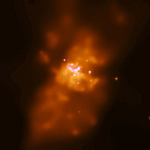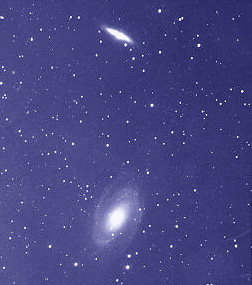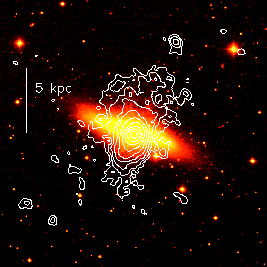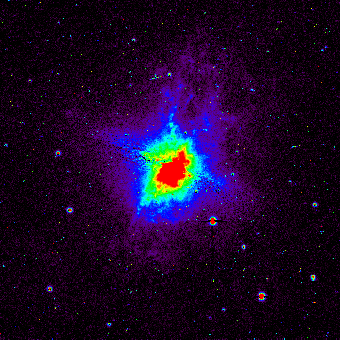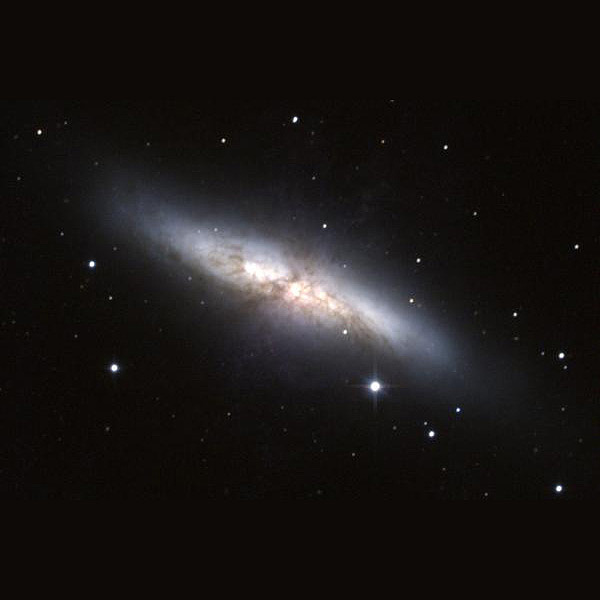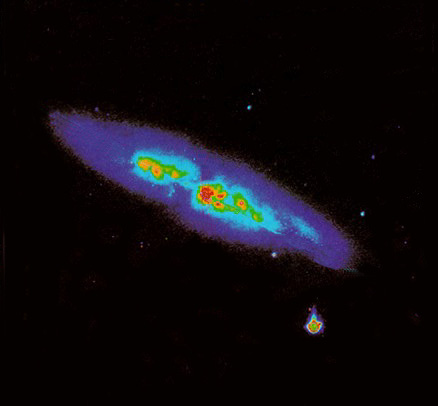CXC Home | Search | Help | Image Use Policy | Latest Images | Privacy | Accessibility | Glossary | Q&A
What Do These Images Tell Us?
|
|
|
|
|
|
|
|
| X-ray | |
|
| Optical | |
|
|
An optical image taken over a broad range of visible wavelengths shows an irregular, blotchy galaxy. The blotchiness is due to dust, which blocks much of the visible light from the galaxy. |
| Infrared | |
|
| Radio | |
|
| Chandra's precise X-ray images of this starburst wind,
together with optical, infrared and radio images, will enable astronomers
to study all the components of a starburst, from the formation of
stars to the explosion of matter out of the galaxy. Return to M82 (14 Jan 00) |


